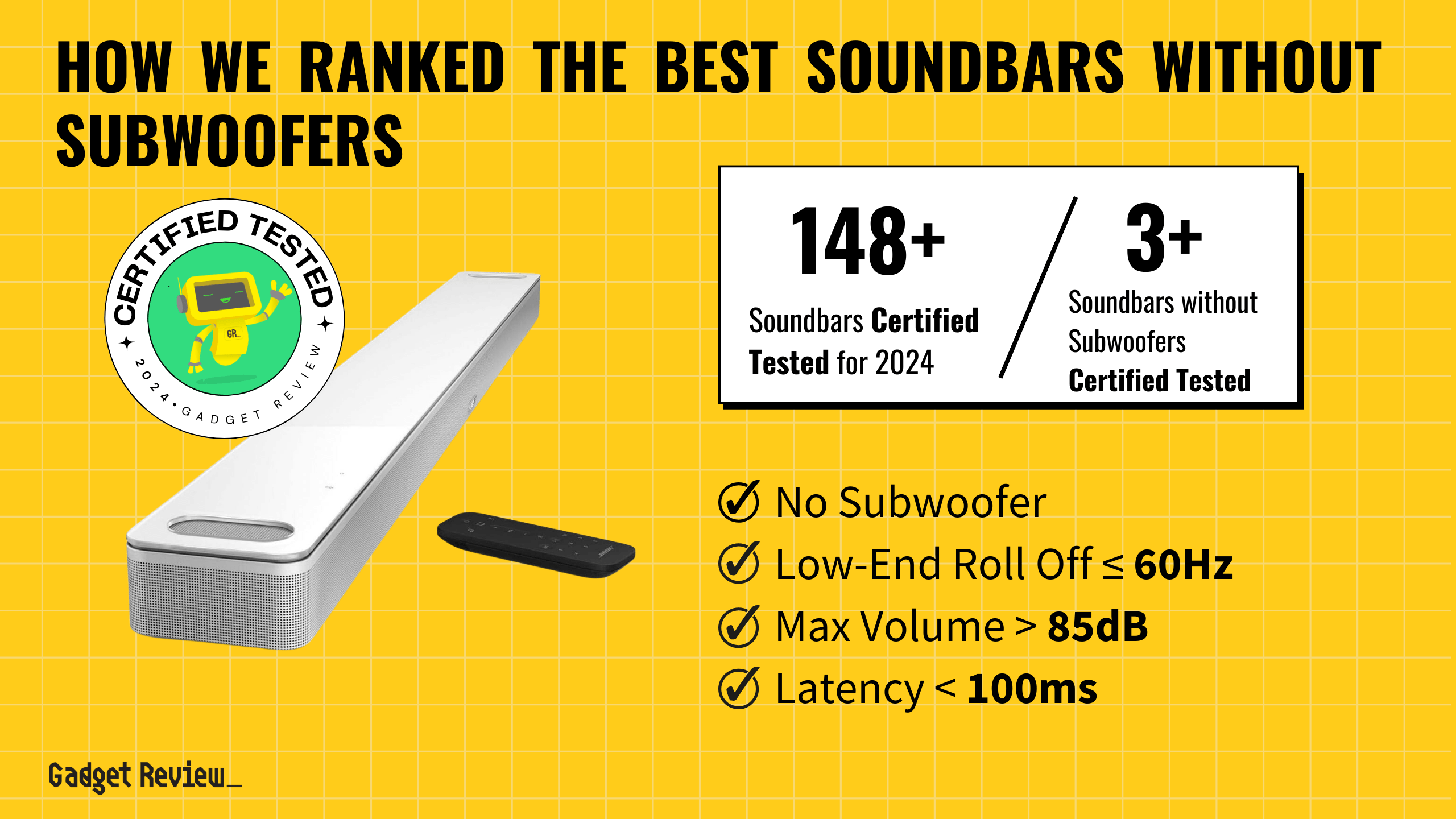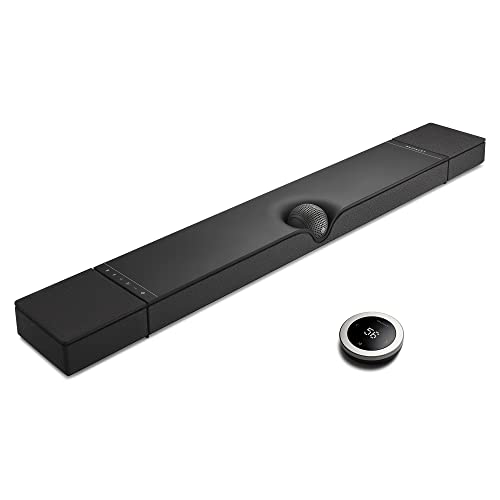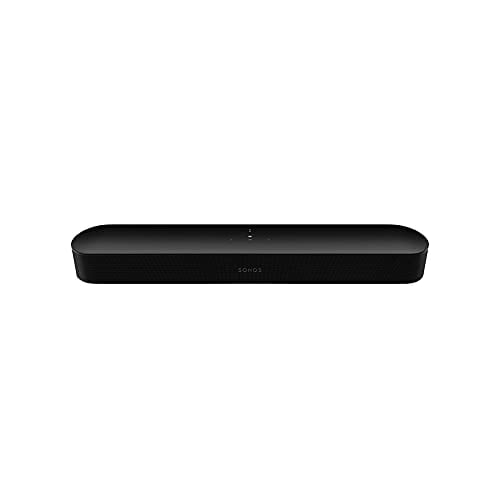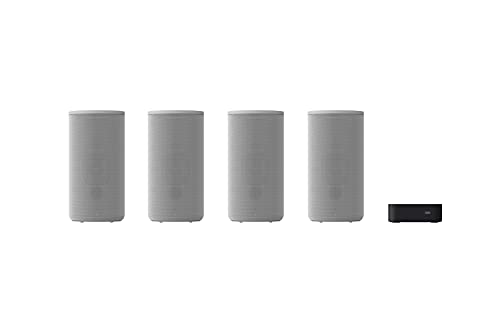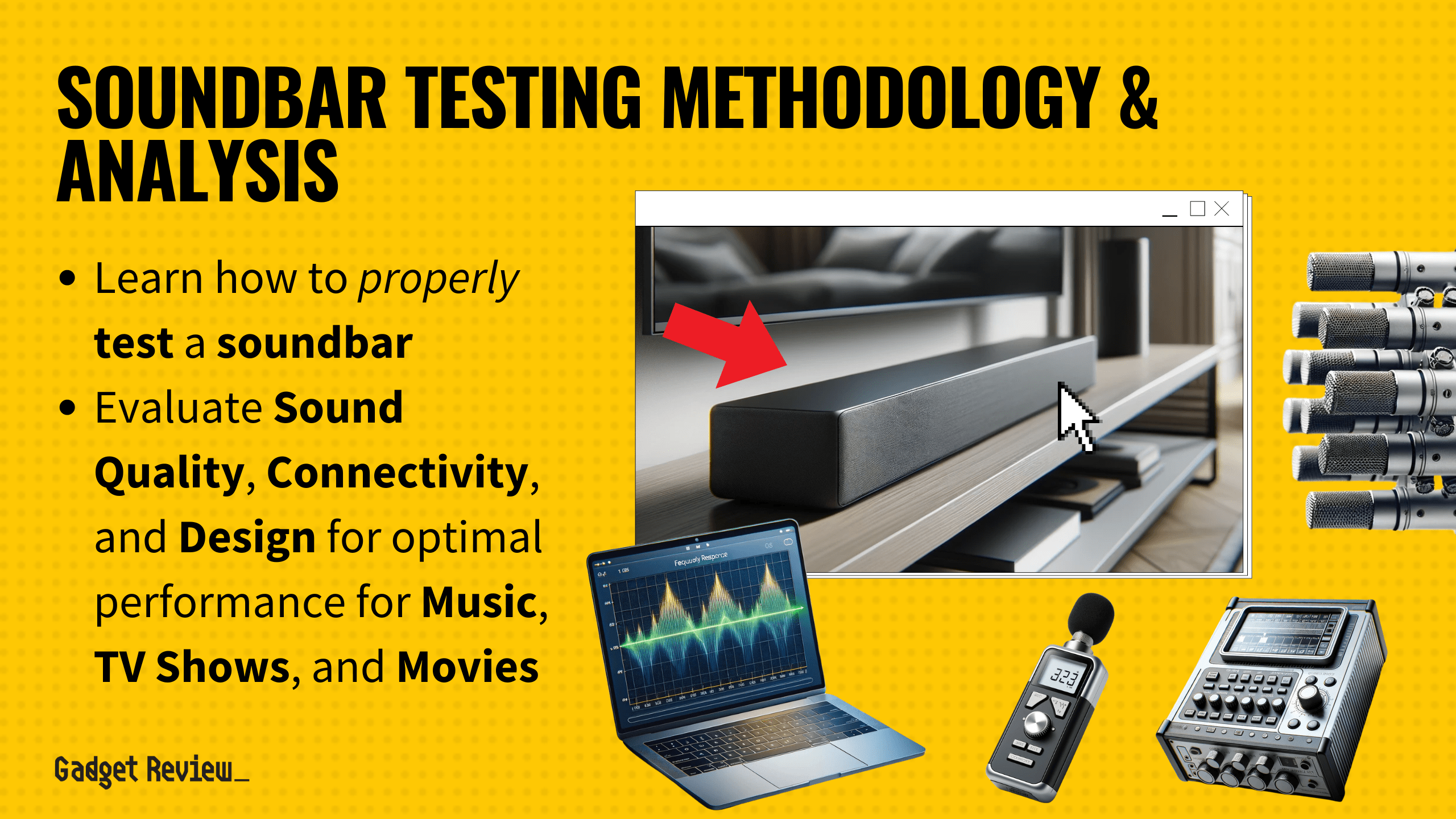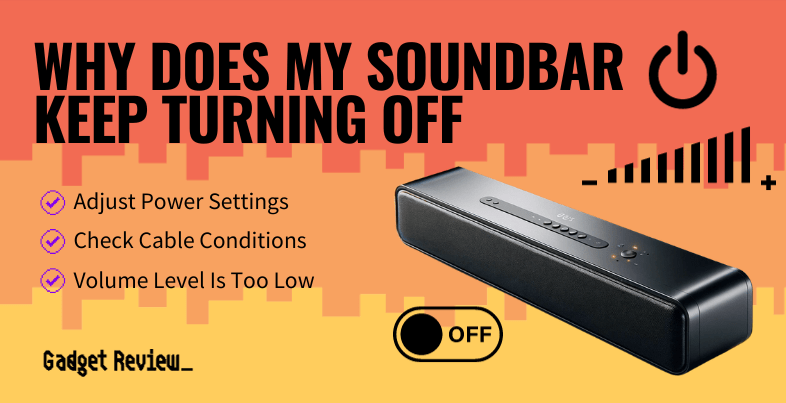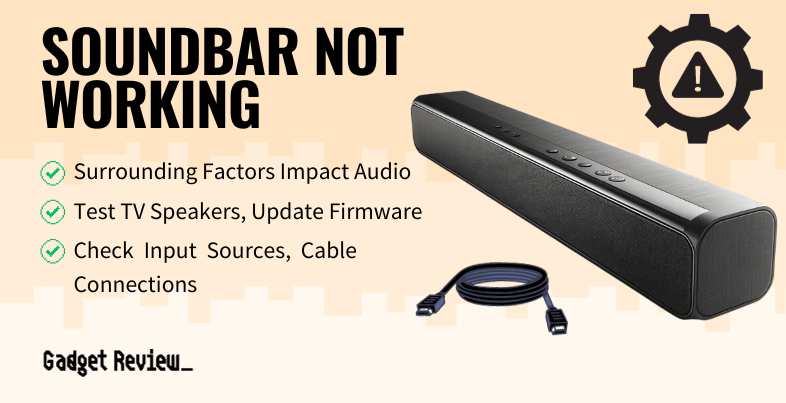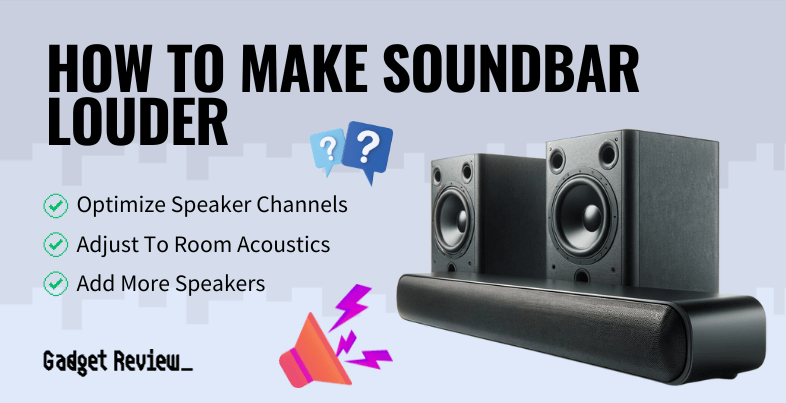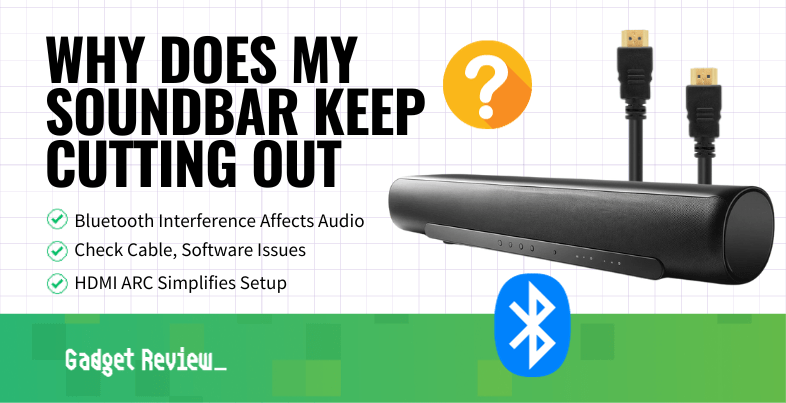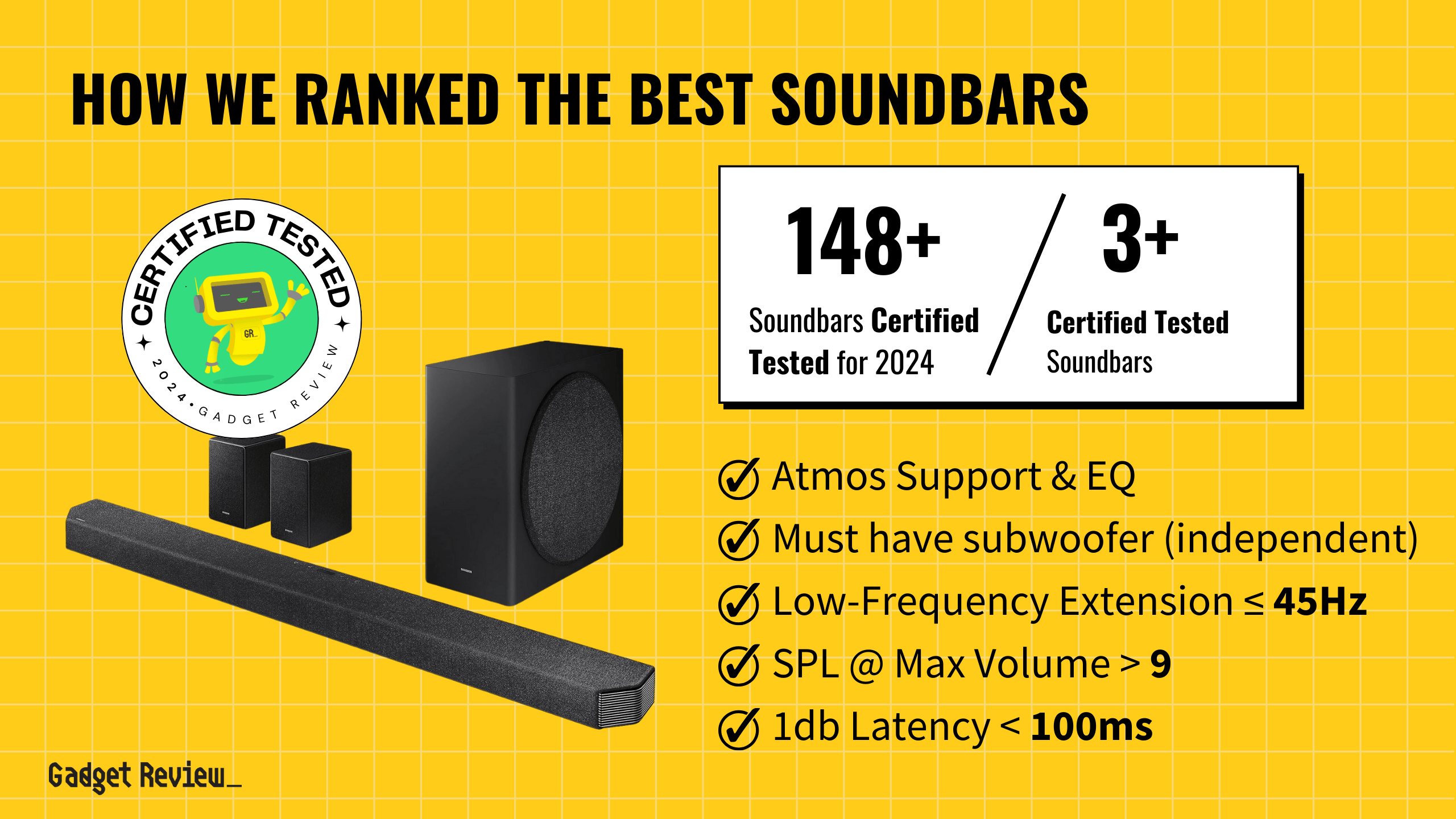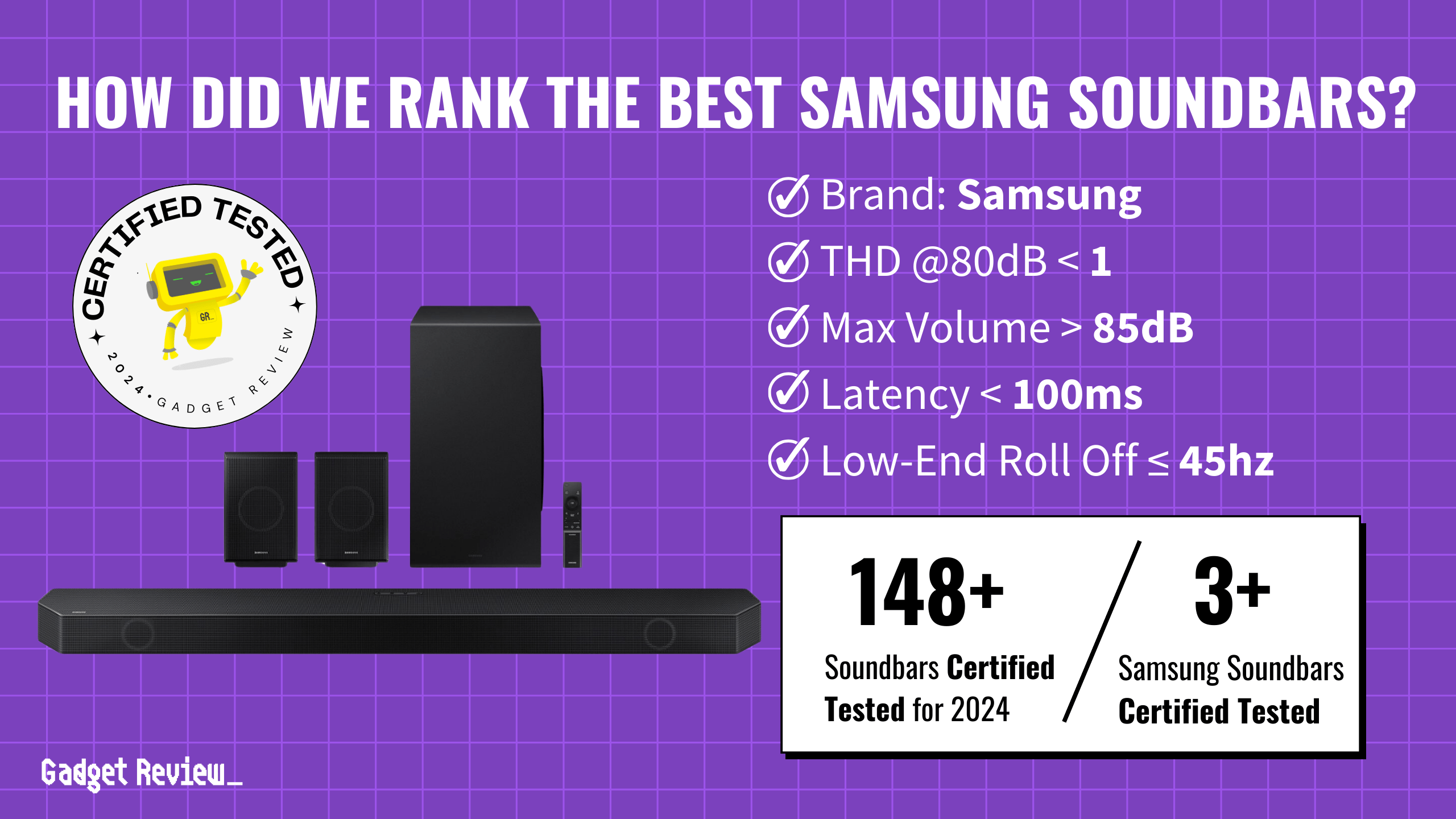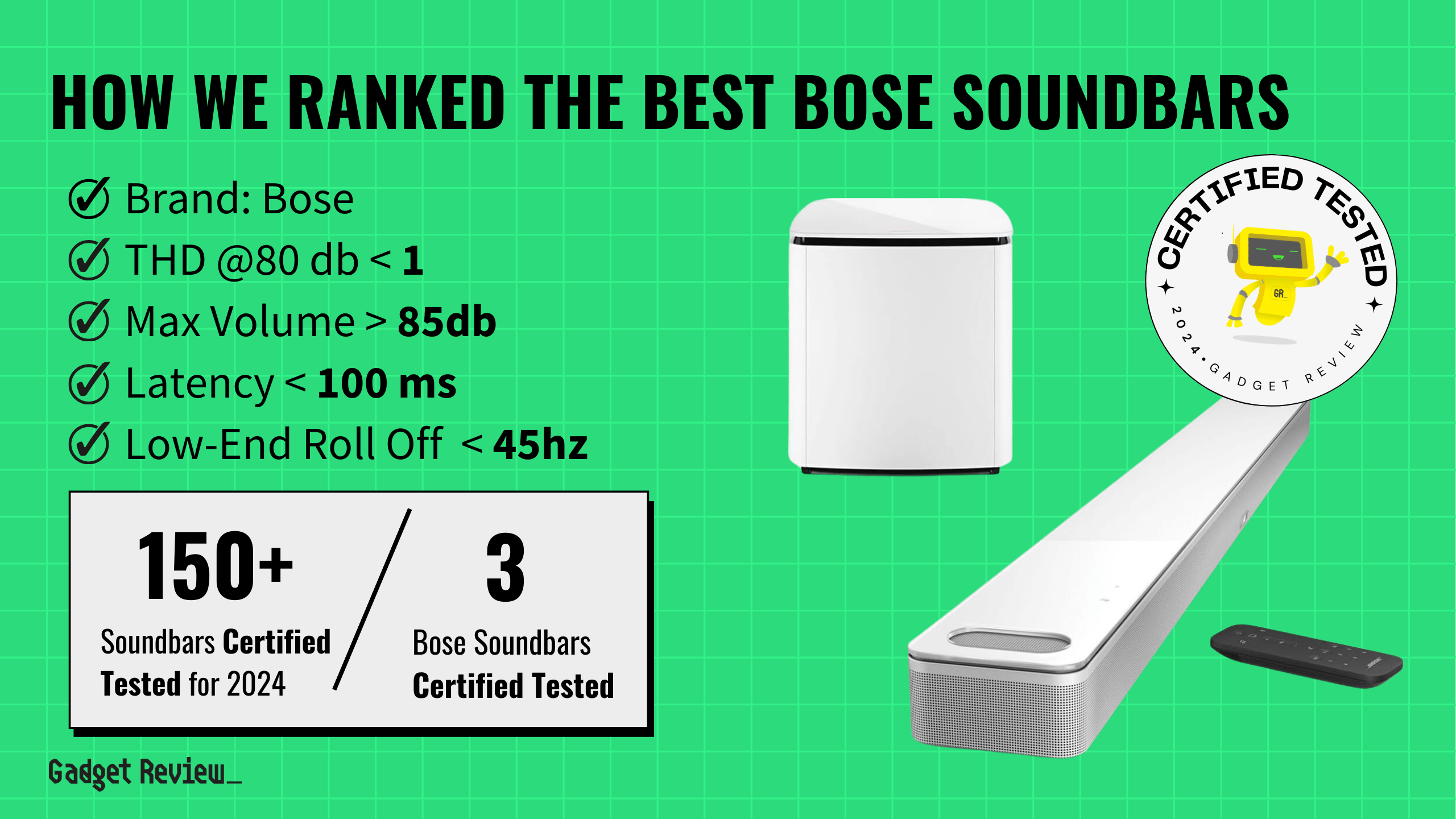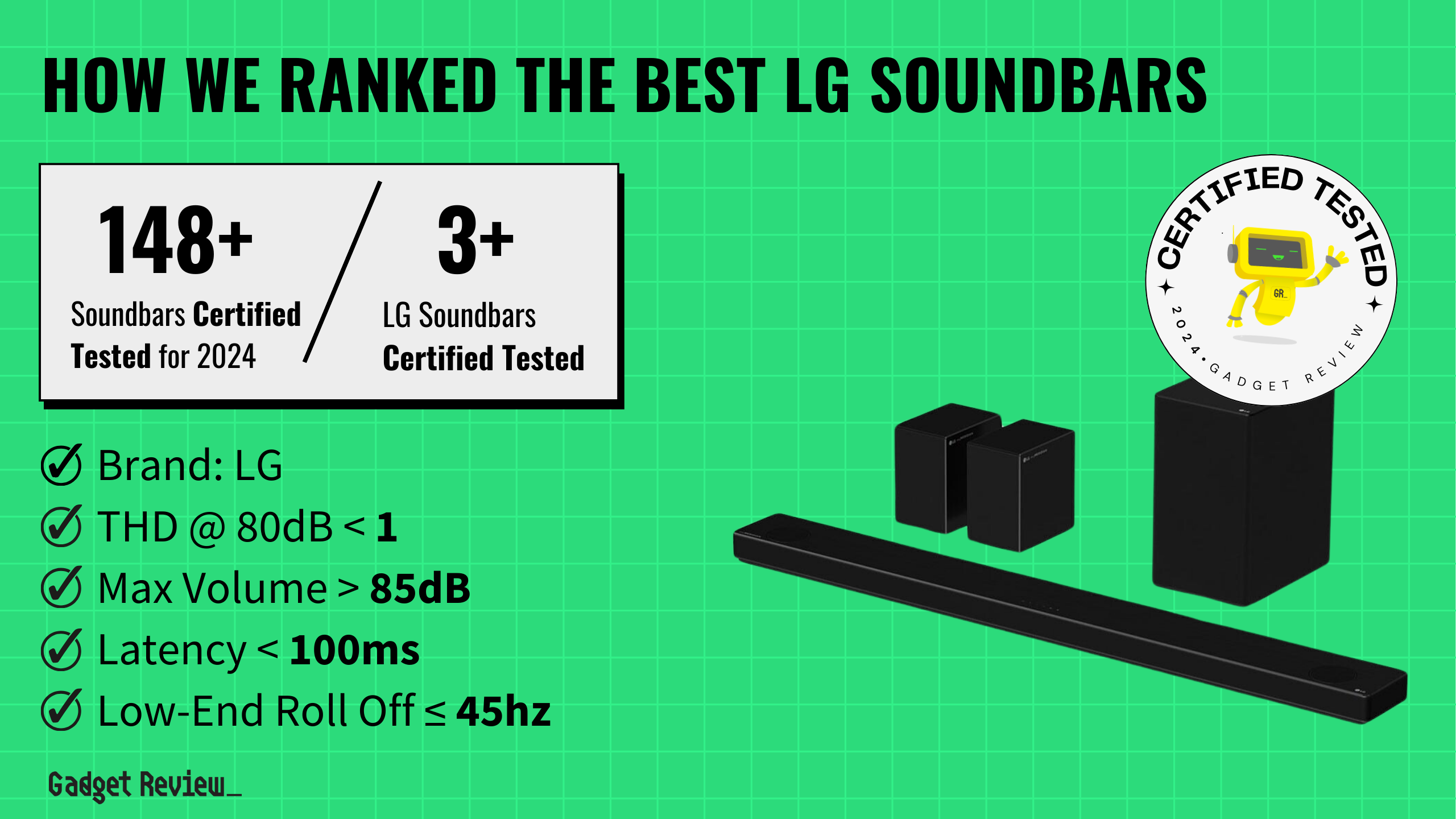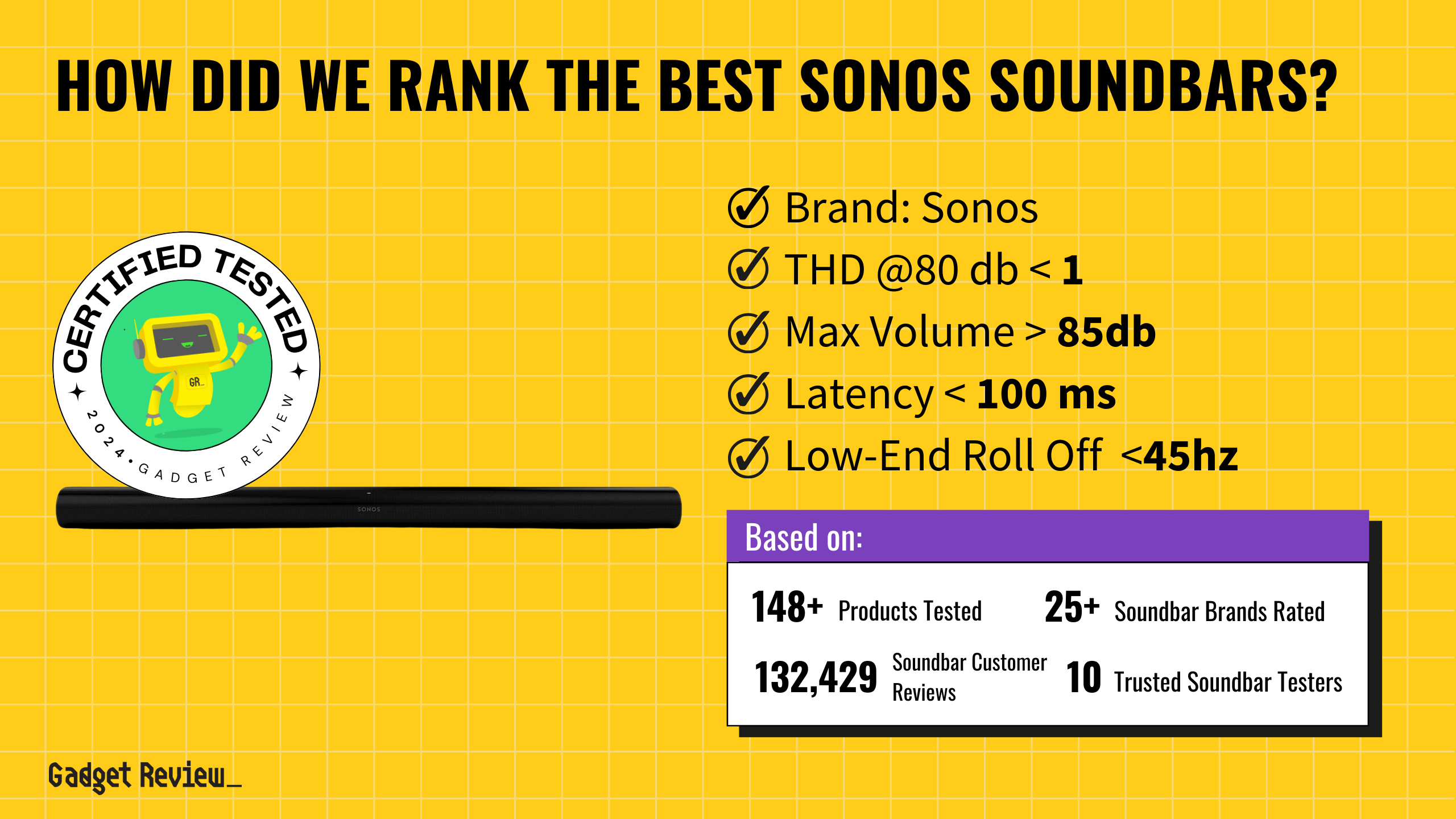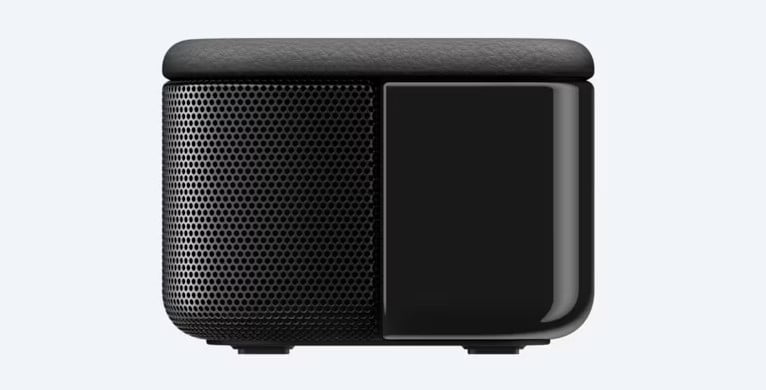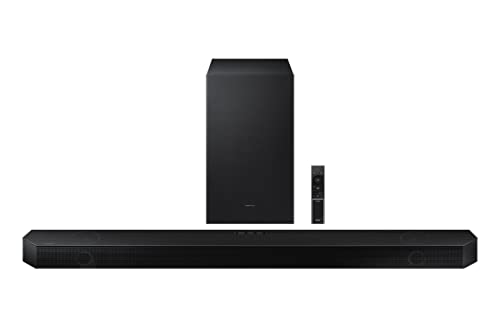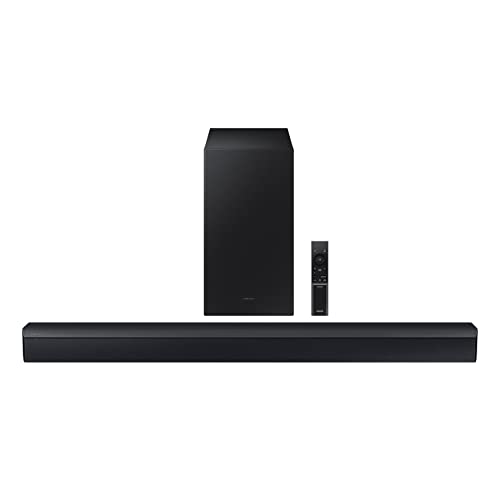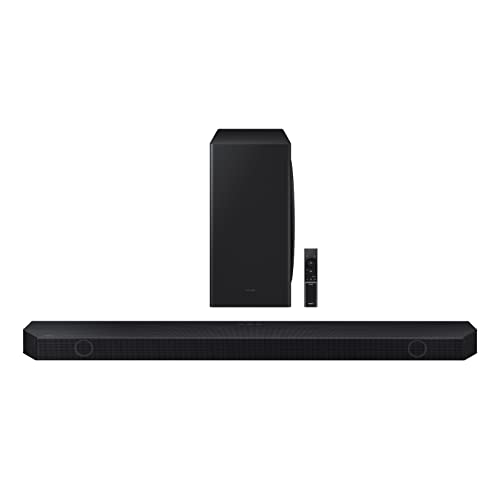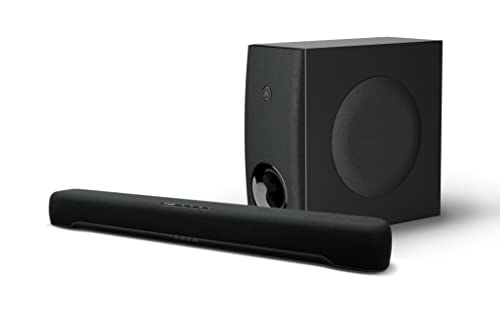When you’re looking for the best soundbars without a subwoofer, the absence of a subwoofer often means a decrease in bass performance. This results in less punchy and booming audio. However, these soundbars offer greater ease of placement in your home theater setup. We prioritized features like strong treble response, minimal distortion, and balanced sound to enhance your listening experience without a subwoofer.
From analyzing 140+ soundbars, only 3 made it to our buying guide based on performance tests. We meticulously analyzed 394,661 reviews, with 91% of experts failing our trust checks. The top performers impressed us with their sound quality and ease of integration. We used a combination of True Score certification and Trust Rating to eliminate fake reviews, ensuring you get the best and most reliable soundbars below.


TL;DR
When you shop through our links, you’re backing our mission.
How Did We Rank the Best Soundbars Without Subwoofer?
By analyzing over 200 websites, we developed a buying guide for the best soundbars without subwoofers that cuts through the noise. We combined rigorous testing methods, detailed customer reviews, and expert insights to pinpoint the top models. Our criteria included 2 essential test results, 2 desirable features, and 1 vital specifications. This ensures our guide is both comprehensive and trustworthy, providing you with the key information needed to choose the best soundbar for your needs.
Our commitment to unbiased reviews is powered by our ‘True Score’ system, targeting low quality and fake reviews. When you shop through our links, you’re backing our mission. Dive deeper to see how.
?️ Minimum Specifications
- Subwoofer Included = No
? Test Criteria
- Low-End Roll-Off: A low-end roll-off of <95 Hz to ensure there is some rumble in the bass to enhance your music or movie-watching experience.
- Volume Output: The soundbar should be able to deliver a powerful and immersive sound performance, exceeding 85 decibels in volume output.
? “Nice To Haves”
- Latency: With a latency under 100 milliseconds, it ensures minimal delay in data transmission or audio processing.
- Total Harmonic Distortion: A total harmonic distortion (THD) below 1% at 80 decibels to guarantee high-fidelity audio reproduction without unwanted frequencies.
Latest Updates
- 04/02/2024: Published the list of best soundbars without a subwoofer based on our True Score system.
Top Best Soundbars Without Subwoofer For 2025
Prices accurate at the time of publishing
To secure a spot on our list, a soundbar without a subwoofer must meet our criteria for audio performance and quality. If it doesn’t meet these standards, it won’t be featured!
Which Criteria Matters for Testing the Best Soundbars Without a Subwoofer?
By focusing on these criteria (2 required, 2 nice to have), anyone can quickly and easily compare these soundbars and how they’ll perform. This helps you make an informed decision and purchase a soundbar that will sound great.
| CRITERIA | RANGE | REQUIRED | DEFINITION |
|---|---|---|---|
| Low-End Roll-Off | < 95 Hz | Yes | The point at which bass begins to sharply fall below the target response point on a frequency response graph, making harder to hear. |
| Max Volume | > 85 dB | Yes | The maximum volume that a soundbar reaches when it’s output it turned up to 100%. |
| Latency | < 100 ms | No (nice to have) | The time it takes for a soundbar to process audio signal from a source and output it through the speakers. |
| Total Harmonic Distortion | < 1 | No (nice to have) | The amount of distortion introduced by the soundbar when it processes an audio signal at a given volume (typically 80, 85 or maximum dB output.) |
Our Trusted Data Sources
(Publication category Score is 80%+)
We looked at 120+ soundbar reviewers and while 10 are trustworthy (60%+ Trust Rating), we only use data from the testers that are “very trusted” which means a Trust Rating above 70%. The three we have listed below are our most trusted for soundbars.
Interested in a comprehensive analysis of our data sources? We’ve got you covered. Below, you’ll find a detailed list of every soundbar review website we’ve identified, organized by their respective Trust Ratings from highest to lowest. But we didn’t stop there. We’ve meticulously reviewed each publication and verified the data by checking whether the authors have bio links to MuckRack or LinkedIn. We’re committed to not only checking the facts but ensuring their veracity.
Best Soundbars Without Subwoofer Test Data & Results
1. Low end roll off test result
Low end roll off
< 95 Hz
Acceptable range of performance
Definition: The point at which bass begins to sharply decline and becomes rapidly inaudible.
Units of Measurement: Hz (Hertz)
Tools to Measure: Oscilloscope
Why It’s Important:
If bass takes longer to start rolling off, it’ll generally be more present in the audible parts of the audio spectrum put out by a soundbar, giving sound “punch” and “depth.”
When it comes to getting the most bass you can out of your soundbar, low-end roll off is a great indicator of just how deep the bass on it can get. If a soundbar doesn’t have a roll off that starts deep enough into the bass part of the audio spectrum, then it’ll result in quiet or even absent bass, which removes most of the punch and impact of not only music, but also movies and video games. the longer it takes bass to roll off, the better.
When it comes to most soundbars for most use cases, we recommend a roll off that doesn’t start until at least 95 Hz, but it only gets better the further you go down. It’s worth noting that the roll off will only get so low, so don’t expect to find soundbars hitting the teens for roll off, but it isn’t uncommon for very bass-forward options to hit 30 Hz before roll off starts. By aiming for at least 95 Hz, you have a much better chance of getting the deep, rumbling bass you’re looking for out of your music, movies or games.
Low end roll off (in Hz; lower is better)
2. max volume test result
Maximum volume is the easiest aspect of a soundbar to understad: it’s just how loud the soundbar itself will actually get. What’s less clear is why a soundbar getting loud is so important. While higher max volumes give you the ability the fill rooms with sound or use a soundbar as makeshift party speakers, they’re also responsible for helping ensure that audio stays clear when listening at normal listening levels.
This is commonly referred to as “headroom”, and having enough headroom on a soundbar means that the soundbar is able to play back sounds at a high enough level (and with good enough clarity) that the volume level you’ll normally listen to music, movies or games with will sound perfectly clear and distortion free. We recommend your soundbar have no less than 85 dB of maximum volume and the higher you go, the better your soundbar is at filling larger and larger rooms.
max volume
>85 dB
Acceptable range of performance
Definition: The maximum volume that a soundbar is able to hit when the output is turned all the way up.
Units of Measurement: dB (Decibels)
Tools to Measure: Sound level or decibel meter
Why It’s Important:
Max volume is how you ensure you’ve got enough volume to fill large rooms and helps ensure clarity at normal listening levels.
Max Volume (in dB; higher is better)
3. latency test result
latency
< 100 ms
Acceptable range of performance
Definition: Time it takes for the soundbar to process and produce the sound it receives from the source
Units of Measurement: milliseconds (ms)
Tools to Measure: Software
Why It’s Important:
Long delays create mismatches between audio and video, which breaks immersion and frustrates gamers.
Large amounts of latency create problems when trying to sync up audio and video. While you’ve got a bit of wiggle room with how much of a delay can exist between the audio that comes out of your soundbar and the images on your TV, it’s not a ton. If there’s too much latency the mismatch starts to become obvious, and people start looking like they stopped talking while dialogue is still playing. This is especially concerning for gamers, who rely on audio and video to sync up well enough that the footprints you hear around the corner are accurately getting closer.
It’s for these reasons we recommend a latency less than 100 ms. For most content, this is a low enough delay that any mismatch is going to be largely unnoticed. If you’re a highly competitive gamer and don’t want to do calibration out of the box to line up the A/V, the lowest latency you can find is going to work best. For music and moves, though, 100 ms or less will work great.
Latency (in milliseconds; lower is better)
4. total harmonic distortion test result
Total Harmonic Distortion (THD) measures the fidelity of soundbars by indicating the percentage of unwanted harmonics added to the original audio. A THD under 1 ensures minimal distortion, critical for preserving audio quality across music, movies and games. This low distortion level enhances clarity, maintains detail, and ensures a high-fidelity listening experience, crucial for understanding dialogues, appreciating music nuances, and immersing in game sounds.
We believe soundbars should have less than 1% THD because this helps confirm their ability to accurately reproduce a wide range of audio without perceptible distortion. We say “perceptible” because it’s impossible to remove all distortion, but you can reduce it to the point it’s impossible to notice. Low THD also helps improve your comfort by preventing fatigue during extended use, making it an essential for anyone that marathons movies, games or music.
harmonic distortion
< 1
Acceptable range of performance
Definition: The amount of distortion that exists in an audio signal when it is played back at a target volume.
Units of Measurement: None or %
Tools to Measure: Audio Analyzer
Why It’s Important:
High levels of distortion ruin audio quality. Keeping distortion low helps keep music accurate and high-fidelity.
Total Harmonic Distortion (lower is better)
Best Soundbars Without Subwoofer: Mistakes To Avoid
- Disregarding Connectivity Options: Ensure the soundbar has the connectivity options you need. Whether you use HDMI ARC or an optical cable, ensure it’s compatible with your TV and other devices. Also, check for features like Bluetooth or Wi-Fi connectivity for streaming music and updates. When considering the best gaming soundbar, prioritizing HDMI ARC compatibility ensures seamless audio transmission from your gaming console to the soundbar.
- Neglecting Size and Placement: Consider the size of your TV and the space available for the soundbar. Opt for a soundbar that complements your TV size without overpowering it. For smaller TV setups, the best small soundbar can provide excellent audio quality without taking up too much space. Additionally, pay attention to the placement options – wall-mounted, tabletop, or shelf-mounted – to ensure it fits seamlessly into your setup. Proper soundbar placement is crucial for optimal audio performance, so consider the acoustics of your room and the layout when deciding where to position your soundbar.
- Underestimating Power Output: Don’t overlook the power output of the soundbar. While subwoofers typically handle low-frequency sounds, the soundbar should still deliver sufficient power for clear and dynamic audio. Look for models with adequate wattage and consider the size of your room to ensure optimal sound projection. For those who prioritize clear conversations in movies and TV shows, finding the best soundbar for dialogue is essential as they are designed to enhance vocal clarity, making every word stand out even in complex soundtracks.
- Believing Soundbars Can Replicate Deep Lows Like a Subwoofer: A common misconception is that high-quality soundbars can reach the deep, rich bass frequencies that a subwoofer is specifically designed to handle. Even the best soundbars without a subwoofer are limited in their ability to reproduce the depth and quality of bass that a subwoofer can. So, if you love bass, a top soundbar with a subwoofer can significantly enhance the low-frequency response, providing a more immersive audio experience.
ADDITIONAL SOUNDBAR TIPS
For the best performance from your soundbar, follow these tips. Understanding the difference between a 2.0 vs 2.1 soundbar setup can help you choose the right model for your needs. Simplify your setup by learning controling your soundbar with your TV remote. If you decide to add a subwoofer, proper subwoofer placement with your soundbar and properly connecting the subwoofer to your soundbar is crucial for optimal sound quality.
Boost your soundbar’s performance with our tips on how to make your soundbar louder. Lastly, decide between different types of speakers by comparing soundbar vs bookshelf speakers to see which best suits your preferences. These insights can help you get the most out of your soundbar setup without needing a subwoofer.
The Best Soundbars Without Subwoofer Tests Compared
Product |
True Score
|
Low End Roll Off
|
High End Roll Off
|
Max Volume Test
|
Latency
|
THD @ 80dB
| |
|---|---|---|---|---|---|---|---|
88 |
|
|
|
|
| $1,999.00 | |
| 87 |
|
|
|
|
| $475.00 $499 $24 |
82 |
|
|
|
|
| $1,183.42 |

